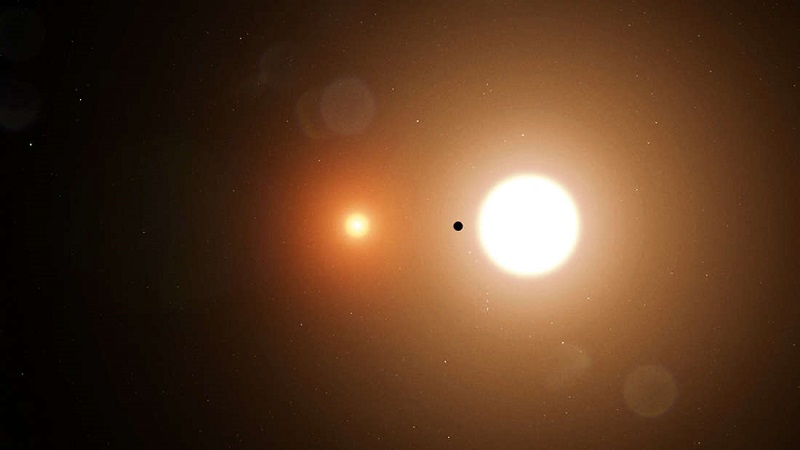NASA’s Transiting Exoplanet Survey Satellite (TESS) discovered its first planet orbiting binary system. The most interesting part is that the discovery was made by a high school student on his third day of NASA internship.
During his junior year at Scarsdale High School in New York, Wolf Cukier obtained a two-month internship with NASA. So last summer, he went to NASA’s Goddard Space Flight Center in Greenbelt, Maryland.
In his first assignment, he examined variations in star brightness captured by NASA’s TESS. It was a part of the Planet Hunters TESS citizen science project. The citizen science project authorizes people who don’t work for NASA to help with discovering new planets.
Cukier found a new planet after three days of his internship

As a matter of fact, after three days of his internship, Cukier found a new planet. The planet’s name is TOI 1338 b and it is 6.9 times larger than Earth. It seems it is coming between us and the star between every 93 and 95 days.
During his internship, Cukier had to examine data from TESS uploaded to the Zooniverse citizen science portal. Many users help researchers find new planets, but the high school student actually managed to do it.
“I was looking through the data for everything the volunteers had flagged as an eclipsing binary. It’s a system where stars circle around each other and from our view eclipse each other every orbit,” Cukier said.
A stellar eclipse that turned out to be a planet
“About three days into my internship, I saw a signal from a system called TOI 1338. At first, I thought it was a stellar eclipse, but the timing was wrong. It turned out to be a planet. I noticed a dip from the TOI 1338 system, and that was the first signal of a planet”, Cukier explains.
“I first saw the initial dip and thought, ‘Oh that looked cool.’ Then when I looked at the full data from the telescope at that star. I and my mentor also noticed, three different dips in the system.”
Cukier is a huge Star Wars fan, so he made an interesting remark. “I discovered a planet. It has two stars which it orbits around. So, if you think of Luke’s homeworld, Tatooine, from ‘Star Wars,’ it’s like that. Every sunset, there’s gonna be two stars setting.”
Furthermore, TOI 1338 contains a star 10 percent heavier than the Sun. The second one is about one-third of the mass of our own star. The two stars orbit each other every 15 days. They diverge to get in front of each other from the human perspective, is known as eclipsing binaries.
The human eye is especially good at finding patterns in data
“These are the types of signals that algorithms really struggle with,” added Veselin Kostov. He is a research scientist at the SETI Institute and Goddard Space Flight Center. Kostov is also the lead author of the upcoming paper on the planet.
“The human eye is good at finding patterns in data, especially non-periodic patterns like those we see from these systems.”
As shown above, TESS can monitor millions of stars. It also takes photographs of the same patch of sky every 30 minutes for 27 days. Previous planet-hunting NASA missions, Kepler and K2, have discovered 12 planets like TOI 1338 b.
After all, TESS can discover hundreds of thousands of eclipsing binaries. Of course, this might be the first planet orbiting binary stars, but for sure it won’t be the last. The TOI 1338 system is located 1,300 light-years away in the constellation Pictor.












































